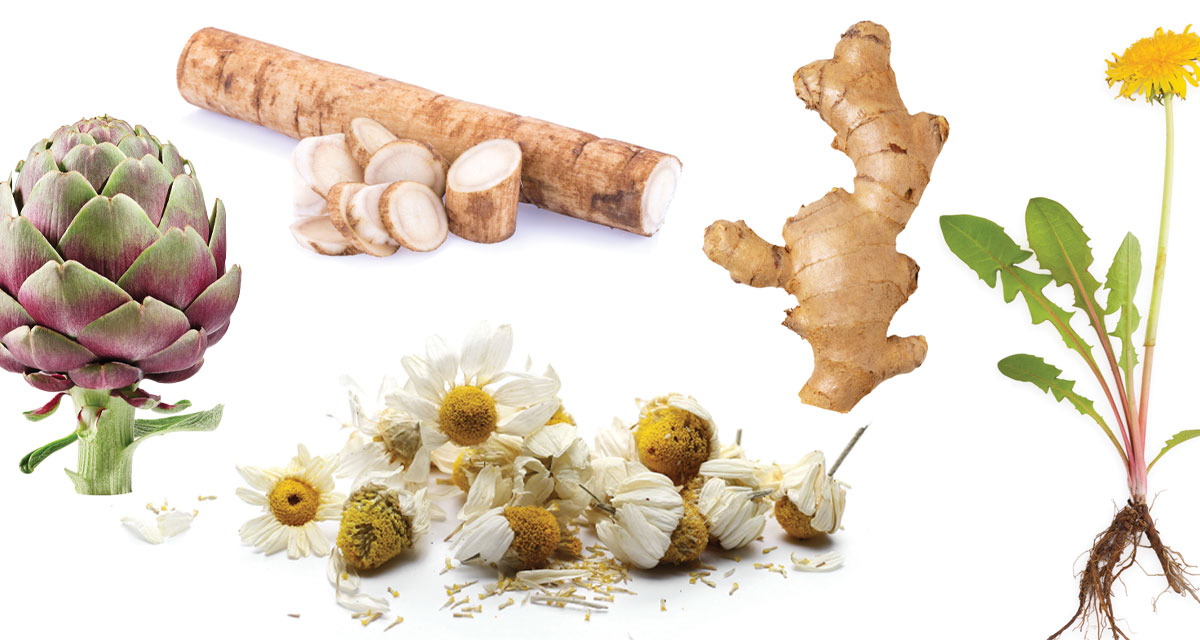The word bitters conjure delicious, fruity mixed drinks, perhaps including a whole cherry, lemon wedge, or a distinct spice. With a few shakes of the canister, the mixologist, in seconds, pours the contents into a glass, adds an umbrella, and sends it to be hand- delivered to the anticipated patron. Unfortunately, most do not see the combination of spices and herbs to offer the flavor complexity. Surprisingly, since the days of the ancient Egyptians, bitters, such as a black walnut leaf, allspice berries, cinnamon bark, and wild cherry bark, for instance, were anticipated herbs of another sort. Not as sensational as experimenting with combinations of liquor and herbs; instead, the plant matter soothed various ailments, such as gas and bloating, relieving nausea and occasional heartburn, balancing blood sugar levels, and improving liver function. In consuming foods lacking the flavor of necessary bitters in our daily diets, it’s understandable why digestive woes are common complaints.
Most likely, you can identify a long list of bitters; they may be growing wild in your garden or landscapes, declared as a weed; then, learning how each herb can help your gut promote healthy digestion, you can begin to select specific teas, make tinctures, or add fresh roots, leaves, or flowers to homemade soups or broths.
Artichoke
As a vegetable, the globe artichoke also is a species of thistle. The leaves impose a unique quality. Rather than providing a warming and drying quality, the artichoke leaf contains potent plant compounds to support liver and cholesterol health. The next time you pull the leaves and remove the “choke,” consider eating the leaves or infusing them into a purposeful oil for future use. The benefit includes a high dosage of vitamins B, C, and K; and magnesium, potassium, and phosphorus.
Burdock Root
Known as an agent to heal skin conditions, such as acne, eczema, and psoriasis, burdock’s powerhouse of antioxidants has cooling properties to aid irritations. Additionally, when consumed, its prebiotic fiber improves the liver, kidneys, gallbladder, bladder, and functions, leading to gut health. One cup of burdock root boosts energy levels, increases stamina, and endurance.
Tip: The concept of growing plants to harvest roots sounds messy. The alternative is buying organic herbs from a reputable, trusted source, such as a local grower or a well-known website. It is sold as dried chips, requiring soaking after five to ten minutes in warm water.
Chamomile Aerial Parts
When pain and upset stomach arrive, Chamomile tea arrives to the rescue. Proven as a gentle bitter, just a few sips relax the muscles, eases digestion, and the occasional feelings of nausea.
Tip: Only steep Chamomile tea for less than five minutes, to prevent the herb from becoming bitter.
Dandelion Aerial Parts or Roots
The yellow flower is one of the first signs of spring, rising early to offer pollinators a source of food. It is a significant medicinal plant for humans, which gently stimulates the liver, supports the kidneys, and improves digestion. Additionally, the plant matter cleanses the body, helps prevent urinary tract infections, and regulates blood pressure. All parts are edible, from the flower to the leaves and down to the roots.
Tip: Harvest the young spring uncontaminated aerial parts by drying them in the oven at 150 degrees for 15 minutes before sealing them into a glass jar. Recipes are readily available!
Ginger
As a candy, cookie, or tea, ginger has acted as a warming carminative to help with cramping, motion sickness, and stomach upset. In addition, ginger is a classic kitchen ingredient used in drinks to soups, baked goods, and a flavoring in meals. Perhaps you instinctively enjoy a cup of ginger tea in the morning or after dinner. The body needs assistance, and ginger is just one bitter that can provide relief.
Our bodies are amazing! The moment our tongue detects a bitter taste, it sends a message to the nervous system, alerting the body for digestion. Immediately, the liver, pancreas, and stomach begin to work, increasing the food’s digestibility while increasing serotonin levels to calm the nervous system; so, it’s understandable why a mixed drink is served 20 minutes before the main meal. You, too, can follow by preceding dinner with a soothing tea! The new habit may change your outlook on eating.























